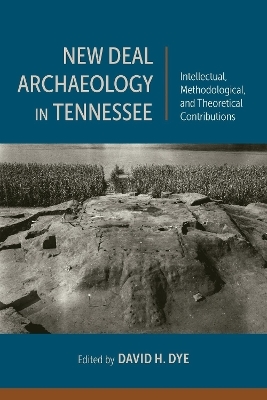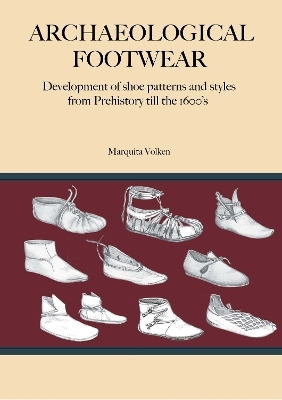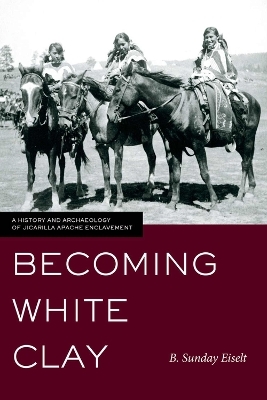
New Deal Archaeology in Tennessee
The University of Alabama Press (Verlag)
978-0-8173-6026-9 (ISBN)
New Deal Archaeology in Tennessee is a collection of essays that explore how contemporary archaeology was catalyzed and shaped by the archaeological revolution during the New Deal era.
New Deal Archaeology in Tennessee tells the engrossing story of Southeastern archaeology in the 1930s. The Tennessee Valley Authority Act of May 1933 initiated an ambitious program of flood control and power generation by way of a chain of hydroelectric dams on the Tennessee River. The construction of these dams flooded hundreds of thousands of square miles of river bottoms, campsites, villages, and towns that had been homes to Native Americans for centuries. This triggered an urgent need to undertake extensive archaeological fieldwork throughout the region. Those studies continue to influence contemporary archaeology.
The state of Tennessee and the Tennessee Valley were especially well suited research targets thanks to their mild climate and long field seasons. A third benefit in the 1930s was the abundance of labor supplied by Tennesseans unemployed during the Great Depression. Within months of the passage of the Tennessee Valley Authority Act, teams of archaeologists fanned out across the state and region under the farsighted direction of Smithsonian Institution curators Neil M. Judd, Frank H. H. Roberts, and Frank M. Setzler. The early months of 1934 would become the busiest period of archaeological fieldwork in US history.
The twelve insightful essays in New Deal Archaeology in Tennessee document and explore this unique peak in archaeological study. Chapters highlight then-new techniques such as mound 'peeling' and stratigraphic excavation adapted from the University of Chicago; the four specific New Deal sites of Watts Bar Reservoir, Mound Bottom, Pack, and Chickamauga Basin; bioarchaeology in the New Deal; and the enduring impact of the New Deal on contemporary fieldwork.
The challenges of the 1930s in recruiting skilled labor, training unskilled ancillary labor, developing and improvising new field methods, and many aspects of archaeological policies, procedures, and best-practices laid much of the foundation of contemporary archaeological practice. New Deal Archaeology in Tennessee offers an invaluable record of that pivotal time for professional, student, and amateur archaeologists.
David H. Dye is a professor of archaeology at the University of Memphis. He is the author of War Paths, Peace Paths: An Archaeology of Cooperation and Conflict in Native Eastern North America and the editor of Cave Archaeology of the Eastern Woodlands: Essays in Honor of Patty Jo Watson.
List of Illustrations
Preface
Acknowledgments
An Overview of Federal Work Relief Projects in Tennessee and the Tennessee Valley, 1933–1942
An Introduction by David H. Dye
Part I. Archaeologists and the New Deal
Chapter 1. W. C. McKern as Adviser, Consultant, and Godfather for New Deal Archaeology in Tennessee by Marlin F. Hawley and David H. Dye
Chapter 2. New Deal Archaeology and the Chicago Method by Jessica R. Howe
Chapter 3. William S. Webb and the Paradoxical Leadership of TVA Archaeology by Douglas W. Schwartz
Part II. Archaeology and the New Deal in Tennessee
Chapter 4. Reinterpreting the Shell Mound Archaic in Western Tennessee: A GIS-Based Approach to Radiocarbon Sampling of New Deal–Era Site Collections by Thaddeus G. Bissett
Chapter 5. Depression-Era Archaeology in the Watts Bar Reservoir, East Tennessee by Shannon Koerner and Jessica Dalton-Carriger
Chapter 6. WPA Excavations at the Mound Bottom and Pack Sites in Middle Tennessee, 1936-1940 by Michael C. Moore, David H. Dye, and Kevin E. Smith
Chapter 7. Reconfiguring the Chickamauga Basin by Lynne P. Sullivan
Chapter 8. Bioarchaeological Analysis of the WPA Mound Bottom Skeletal Sample by Heather Worne, Giovanna M. Vidoli, and Dawnie Wolfe Steadman
Part III. The Legacy of the New Deal
Chapter 9. The Tennessee Archaeological Society from 1944 to 1985: Legacy and Consequences of the New Deal in Tennessee by Kevin E. Smith
Chapter 10. Tennessee's New Deal Archaeology on the National Stage by Bernard K. Means
Chapter 11. Comments on New Deal Archaeology in Tennessee, Then and Now by Gerald F. Schroedl
Contributors
Index
| Erscheinungsdatum | 27.08.2021 |
|---|---|
| Co-Autor | Thaddeus G. Bissett, Jessica Dalton-Carriger, David H. Dye, Marlin F. Hawley |
| Zusatzinfo | 29 black & white figures, 14 tables |
| Verlagsort | Alabama |
| Sprache | englisch |
| Maße | 152 x 229 mm |
| Gewicht | 410 g |
| Themenwelt | Geisteswissenschaften ► Archäologie |
| Sozialwissenschaften ► Ethnologie | |
| Sozialwissenschaften ► Soziologie | |
| ISBN-10 | 0-8173-6026-3 / 0817360263 |
| ISBN-13 | 978-0-8173-6026-9 / 9780817360269 |
| Zustand | Neuware |
| Haben Sie eine Frage zum Produkt? |
aus dem Bereich


